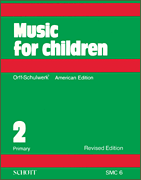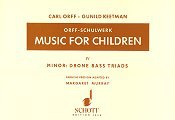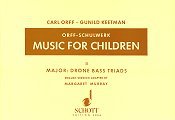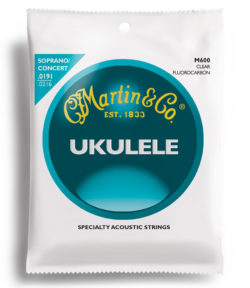Description
Teacher’s guide to the Orff-Schulwerk approach, revised edition. The book has 3-part organization, with each part getting more challenging. Each part contains games for group readiness, movement tasks, speech materials, rhythmic and metric exercises, singing, instrumental playing and reading and writing music opportunities.
For teachers to use with grade 1 to 3.
Contents
Message from Carl Orff
Introduction
Part One
Games for group readiness promote a cooperative atmosphere.
Movement activities, in most examples, are combined with verses and songs.
Songs and singing games are often pentatonic and within the octave.
Speech exercises offer texts and models for further development of similar pieces.
Rhythmic and metric exercises include the use of body percussion and non-pitched instruments.
Instarumental playing opportunies are at a basic skill level.
Reading and writing music grows from first experiences with graphic symbols for sound.
Part Two
Games for group readiness are more challenging and many are part of the movement activities or in the improvisation examples.
Movement continues to provide opportunities for solo and group response to music. Traditional children’s dances and singing games are included. .
Speech exercises present models and texts to be accompanied by body percussion or instruments.
Rhythmic and metric explorations use body percussion as ostinato support for songs and texts. These prepare for instrumental accompaniments.
Singing incorporates and extends the melodic compass from Part One.
Instrumental playing continues the progression of technical challenges for exercises with pitched and non-pitched instruments.
Reading and writing music assumes greater importance.
Part Three
Games for group readiness build independence and social interaction with skills being refined.
Movement tasks build on previous experiences with free movement and singing games to explore partner and group improvisation.
Speech materials are often open for the group’s interpretations.
Rhythmic and metric exercises introduce new meters and triplets in aBA and rondo form. Canons develop independence.
Singign includes diatonic, major, minor and modes.
Instrumental playing progresses.
Reading and writing music games and exercises continue.
Articles
Introduction – Joachim Matthesius
Using the Confluent Advantages of Work and Play in Orff Schulwerk – Martha Maybury Wampler
Movement – Sr. Marcia Lunz
On Playing the Instruments – Miriam Samuelson
On Reading and Writing Music – Miriam Samuelson
Building Musical Instruments with Children – Susan Kennedy





Reviews
There are no reviews yet.